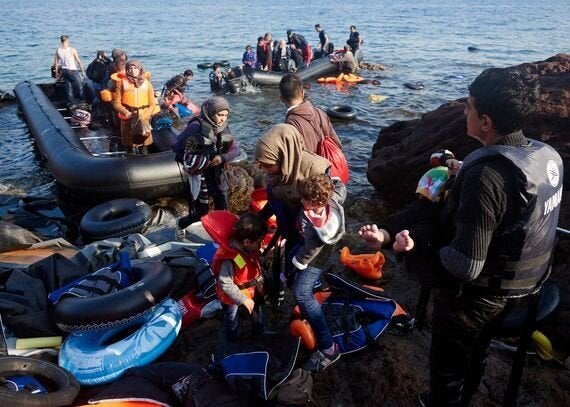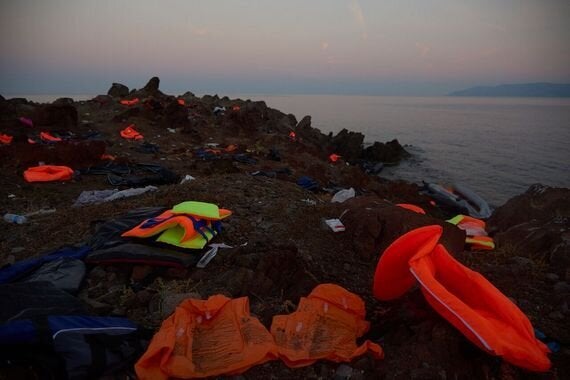After nearly 2,000 miles on the road we arrived in the small tourist town of Ayvalik on the west coast of Turkey. Up and down this coastline - from Çanakkale in the north to Fethiye in the south - smugglers were facilitating thousands of refugees to cross the Aegean sea to the shores of nearby Greek islands. This was the fastest way to touch European soil and it was the trail that we would be documenting in our film.
Turkey has witnessed the arrival of refugees in their thousands, as has Lesbos, the Greek island where many have landed in the hope of getting to mainland Greece, and the more economically prosperous countries in northern Europe beyond.
We wanted to show the faces of people as they arrived in this region, to remind the world that humans are surviving these perilous sea journeys every day. So, we packed up our things again and caught a ferry to Mytilene, Lesbos's main port, at around 20:00.
We were now in Europe and were welcomed with suspicion by the Greek customs officials. The van was subjected to a thorough search which included strange rituals like smelling the air from our tyres! However, other than the odour created by six men, they found nothing suspicious and we were free to leave.
We took the coastal road out of Mytilene, where modern bars and traditional cafes lined the streets, where locals and groups of migrants were walking about their business as if it had always been that way. A ferry was waiting on the other side of the main town, with refugees heading towards a gated entrance.
On closer inspection we could see that the ferry was packed full of refugees and we found out that it was heading to Athens. This has been the case for months now. These huge boats, usually frequented by holidaymakers, were now shipping thousands of migrants from the island every day. And this was just one boat on one island! We hung around and interviewed people, some lucky enough to get on and some unable to do so. (Some of these interviews will feature in our final documentary.)
Our next destination was Mithymna, at a Bed and Breakfast that provided neither as it had closed for the winter despite our online booking. However, being forced to sleep under the stars meant that we experienced what some of the island's refugees were facing that night.
As the sun rose we went in search of a vantage point from which to look out to sea. From high up on a hill our gaze was drawn to the thousands of discarded luminous life jackets that lined the beaches. The sheer number was mind-blowing. And then we saw it...
A small black speck on the horizon topped by a glimmer of orange. A dinghy loaded with people! We got into the van and headed straight towards it, and before we had cleared the trees that lined the path to the cliff we heard the hum of an outboard motor and voices, a mixture of euphoria and fear, emanating from the sea below.
And then there it was - we could see it - through the trees, a black rubber dinghy sitting low in the water, packed with people, and another close behind. Men, women and children, faces etched with emotion, grasped at the land as they covered the last few metres to the rocky beach.

As the first dinghy touched land the people began jumping off, clambering through the water, with local Greek volunteers helping to hold the boat steady. People were slipping and falling, rushing to get away from the water and children were passed to the safety of adult arms. Then, as the realisation dawned, jubilant cheers went up in acknowledgment of their arrival.
A busy murmur of activity soon followed, with people preparing themselves for the next challenge, the next stage in their journey. The beach was almost empty again except for the volunteers, and more discarded life jackets...
